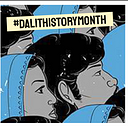Madara Chennayya — A Medieval, Anti-Caste, Poet-Activist
by Ashwini KP
“If words and deeds are firm
There is no pollution of race or birth.
If words are good and deeds are bad, that is pollution without liberation.
Righteousness is high caste, unrighteousness in pollution”
Today in #DalitHistory we celebrate the legacy of Madara Chennayya one of the very first anti-caste poets who used his art to challenge caste hierarchy and discrimination.
In the 12th century, Karnataka witnessed an anti-caste social reform movement founded by Saint Basavanna that changed all existing parameters of social transformation. Not only did this movement break caste and gender barriers, but it also contributed immensely to Kannada literature because reform in thought and practice was brought about through poems, songs and music.
This movement is categorised as part of a larger trend of Mukti movements in medieval South Asia. These movements were while taking place in different regions, were tied together by their spiritual approach to anti-caste values and their focus on the matters of the common people. Basavanna’s Sharana movement was provided space to various individuals across caste and gender lines to express their voice.
The expressions of Sharanas, people of the Sharana movement, paved the way to a whole new form of literature called Vachana Sahitya (Vachana Literature). The term Vachana has a meaning that can be roughly translated as an utterance of conscience’. In the history of Karnataka, the significance of Vachanas was immense that the 12th century period is referred to as ‘Age of Vachanas’ In this backdrop we see the rise of writers and poets belonging to marginalised communities.
Chennayya, writing under the pen name ‘Nijaatma Ramma’, was one of the most prominent poets during the Sharana movement. An untouchable caste cobbler by profession, Chennayya first rose to prominence with his vachanas and discussion at Anubava Mantapa (community platform) set up by Basavanna. Chennayya has been held up as nothing less than the very first Vachana poet. In his Vachanas, Chennaiah threw light on the caste, dignity of labour, righteous conduct and many other social aspects. He questioned the rigidity of the caste system and condemned untouchability. With his excellent knowledge and metaphorical creativity, he transformed the literary standards.
He was very close to Basavanna who considered him as his father and referred to him in many of his Vachanas.
After erecting three pillars
The gross, the subtle and casual bodies
After beating the buffaloes rough hide
After removing the flesh
With the staff of the manifest and the hidden
After tanning the hide with the fiber of dualism
After pouring the caustic juice of quintessence
Into the hide pouch of awareness
The blemishes of soul thus destroyed
I have come to take the sandals to his feet
Take care,
Not of the ground below,
But of the path your feet and sandals take
Do not be enslaved
By the hand-awl, blade or peg
But realize
Ramrama, your own true self, the joys of joys!!
Chennayya spoke of the importance that righteous conduct holds and not the caste one belongs to. According to Chennayya, there are only two castes; virtuous or immoral for humans to choose.
Difference only in blood, bones, marrow and body fluids
Difference only in passion and obsession,
Difference only on different occupations,
Difference only between what appears and the soul that knows.
Whatever the caste, one who knows attains the thing.
If one forgets, one becomes related to Maya and pollution.
Don’t be a mere servant to awl, scissors, and lower millstone,
Know Nijaatma Ramma.
This anti-caste movement led by the Sharanas faced severe repercussion from the state. Despite the consequences of challenging caste practices in the then Kalyana kingdom, the Sharanas like Chennayya stood tall and laid the foundation for several other anti-caste movements that emerged post-Sharana movement.
We must remember that Chennayya’s vachanas were not just poems; instead, these were strong political assertions. Today, we remember Channayya and honour his contribution to the creation of a society based on equity.
This post was written for Dalit History Month by Ashwini KP. Ashwini is a researcher and works on issues related to human rights, Dalit women, caste and social exclusion. You can reach her at ashwini.kp16@gmail.com
Sources
Dr. M.M Kalburgi and Dr. Ol Nagabhushanaswamy, Vachana, Basava Samiti, Bangalore
H.S. Shivaprakash, 2010, I keep the Vigil of Rudras: the Vachanas, Penguin Publications.
https://karnatakahistory.blogspot.com/2017/12/madara-chennayya-dalit-saint-of.html
